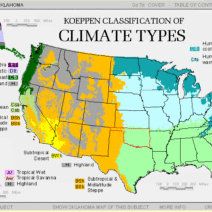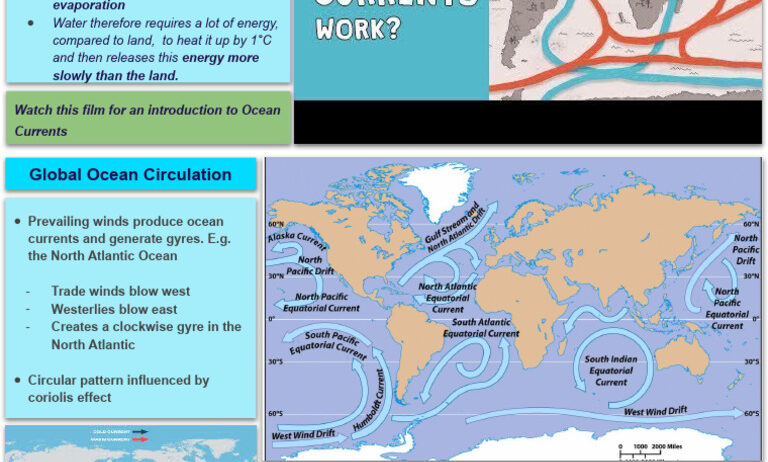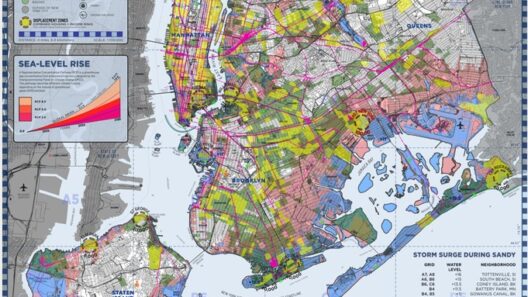Oceans cover over 70% of our planet’s surface, acting not only as a reservoir of life but also as a critical influence on global climate systems. The climate within the ocean biome is a complex interplay of currents, temperature variations, and the myriad forms of marine life that thrive within these dynamic waters. Understanding this biome is essential, not just for the preservation of biodiversity, but also for the implications it holds for climate change and global atmospheric patterns.
The ocean biome is characterized by its vastness and diversity, which can often lead one to underestimate its significance in regulating Earth’s climate. The temperature of the ocean plays a pivotal role in this regulation. Typically, surface temperatures can fluctuate significantly, influenced by geographical location, the time of year, and ocean current patterns. In equatorial regions, surface waters can reach temperatures exceeding 30 degrees Celsius (86 degrees Fahrenheit), while polar regions may hover just above freezing. The vast temperature gradient between these zones fosters a variety of ocean currents, cementing a complex web of interactions.
Ocean currents, both surface and deep-water, are the lifeblood of marine systems. Surface currents are primarily driven by wind patterns and the Coriolis effect, arising from the Earth’s rotation. For instance, the Gulf Stream transports warm water from the Gulf of Mexico along the eastern coast of the United States and across the Atlantic to Western Europe, significantly affecting the climate of these regions. This transfer of heat illustrates a clear connection between oceanic phenomena and terrestrial weather patterns. In contrast, deep-water currents, often referred to as thermohaline circulation, are driven by differences in temperature and salinity, contributing to the global conveyor belt that circulates water and energy around the planet.
As one delves deeper into the essence of ocean currents, a remarkable pattern emerges: they function as conduits of energy and nutrients throughout the basin. The upwelling zones, where nutrient-rich waters from the deep rise to the surface, support some of the most productive marine ecosystems on the planet. Coastal upwelling, for example, occurs when winds push surface waters away from coastlines, allowing deeper waters to replace them with nutrient-dense content. This phenomenon not only fuels planktonic life but also supports higher trophic levels, ranging from fish to marine mammals, creating an intricate tapestry of life. In these areas, marine biodiversity flourishes, demonstrating a direct correlation between ocean temperature, current systems, and biological productivity.
However, the climate of the ocean biome is not static; it is a fluid entity perpetually subject to change, especially under the looming shadow of climate change. The increase in anthropogenic greenhouse gas emissions leads to a rise in ocean temperatures—a phenomenon documented in various scientific studies. Warmer waters adversely affect marine ecosystems, leading to coral bleaching, which threatens the delicate balance of tropical reef ecosystems, and altered breeding patterns in fish species, which may disrupt existing food chains. Furthermore, increased stratification due to temperature differences limits nutrient mixing, further exacerbating the challenges faced by marine life.
The implications of these climatic shifts reverberate beyond immediate marine impacts. The ocean is a significant carbon sink, absorbing approximately 30% of the carbon dioxide emitted into the atmosphere. However, as the oceans warm and the chemistry of the water changes, its ability to sequester carbon diminishes. This alteration in oceanic carbon cycling can further exacerbate climate change, creating a feedback loop that threatens both marine life and terrestrial environments.
Speaking of life, the ocean biome is home to multifaceted ecosystems, each adapted to their specific temperature regimes and currents. From the dazzling beauty of coral reefs to the mysterious deep-sea species that thrive in perpetual darkness, there exists an overwhelming richness in marine habitats. The biodiversity within this biome is shaped by environmental factors, including temperature gradients, salinity levels, and availability of sunlight. For instance, the photic zone, where sunlight penetrates, is a hotspot for photosynthetic organisms, supporting vast populations of zooplankton and fish. Conversely, the abyssal zone, where light is absent, hosts organisms that have evolved astonishing adaptations to withstand crushing pressures and frigid temperatures.
Conspicuously, marine life relies on these fundamental aspects of ocean climate for survival. Fish species exhibit migration patterns closely linked to temperature and food availability, often moving in accordance with changing oceanic conditions. Majestic species such as the blue whale dive into sub-zero waters in pursuit of krill and other prey, showcasing the dynamic relationship between ocean temperature, nutrient availability, and primary producers. The interdependence of organisms in the ocean highlights the complexity and interconnectedness of marine ecosystems.
In conclusion, the climate in the ocean biome encompasses an intricate web of currents, temperatures, and biological interactions that are critical for sustaining life on Earth. Acknowledging the profound influence of oceans on global climate systems is imperative as humanity faces the escalating crises of climate change. The ocean not only serves as a vibrant habitat teeming with life but also plays an indispensable role in our planetary systems. As stewards of the Earth, it is crucial to engage in conscious efforts to understand, protect, and restore the delicate balance of this vital biome, ensuring a resilient ocean for future generations.








